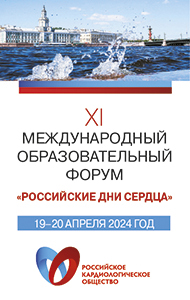Risk for cancer elevated in stroke survivors
NASHVILLE, Tenn. — In a new analysis of the Vitamin Intervention for Stroke Prevention study, the annual rate of age-adjusted cancer incidence was higher among survivors of ischemic stroke compared with the general population.
Moreover, stroke survivors with cancer had an increased risk for death than survivors without cancer.
Researchers analyzed 3,247 adults (mean age, 66 years) with nondisabling cerebral infarction to determine the rate of incident cancer and effect on CV endpoints. Participants were followed for 2 years. Adnan I. Qureshi, MD,and colleagues calculated age-adjusted rates of cancer incidence amongischemic stroke survivors and calculated the standardized incidence ratios based on comparison with age-adjusted rates in the general population. They used logistic regression analysis to evaluate the association between incident cancer and various endpoints, including stroke, CHD, MI and death, after adjustment for age, sex and race/ethnicity.
“We have always considered cancer and stroke as two mutually exclusive diseases. This work points out that they are not actually mutually exclusive, and may be more interlinked than we have thought before,” Qureshi, professor of neurology, neurosurgery and radiology and program director of the Endovascular Surgical Neuroradiology Program at the University of Minnesota, said during a press conference at the International Stroke Conference.
According to results presented, the incidence of new cancer was 0.15 per 100 patients at 1 month, 0.8 per 100 patients at 6 months, 1.2 per 100 patients at 1 year and 2 per 100 patients at 2 years. Among cancer types, the highest burden was skin cancer, according to Qureshi.
The age-adjusted annual rate of cancer among participants 1 year after recruitment was 581.8 per 100,000 people, which is higher than the rate of 486.5 per 100,000 people in the general population (standardized incidence ratio = 1.2; 95% CI, 1.16-1.24).
At 2 years after recruitment, the annual rate of cancer remained higher in the ischemic stroke cohort (1,301.7 per 100,000 people vs. 911.5 per 100,000 people; standardized incidence ratio = 1.4; 95% CI, 1.2-1.6).
After adjustment for potential confounders, in the cohort of stroke survivors, those who developed cancer had a higher risk for death (OR = 3.1; 95% CI, 1.8-5.4), fatal/disabling stroke or death (OR = 2.3; 95% CI, 1.4-3.7), and stroke, CHD and/or death (OR = 1.4; 95% CI, 1-2.2).
Among stroke survivors, those who developed cancer were older (P < .001), more likely to be male (P = .01) and more likely to have congestive HF (P = .01).
“There is clearly a higher risk of cancer in patients with ischemic stroke as compared with the general population,” Qureshi said. “Higher risk of incident cancer in part explains why these patients have a higher chance of dying over the next 2 years, as compared with their counterparts who haven’t developed stroke. Clearly, there is a great need for further research into why these patients are at higher risk for developing cancer, and whether there is a role for cancer screening at the time these people develop ischemic stroke.” – by Erik Swain
For more information:
Qureshi AI, et al. Abstract 210. Presented at: International Stroke Conference; Feb. 11-13, 2015; Nashville, Tenn.
Disclosure: Qureshi reports no relevant financial disclosures.
Source: www.healio.com


.jpg)



